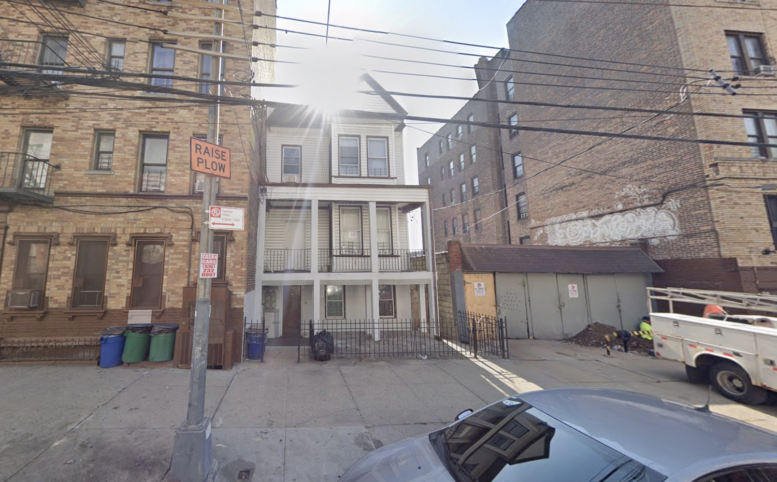State Finances Have Stabilized and Budget Gaps Reduced; Multiple Proposals Continue to Bypass Comptroller Oversight
After the disruption caused by the COVID-19 pandemic, the state’s finances have stabilized, and the Division of Budget (DOB) is now forecasting reduced budget gaps. In his annual report assessing the proposed Executive Budget, State Comptroller Thomas P. DiNapoli identifies positive developments, as well as risks, challenges, and concerns, including several new proposals that restrict independent oversight by his office.
“New York state has taken positive steps to stabilize its finances with higher reserves and lower projected budget gaps,” DiNapoli said. “Still, the Executive and the Legislature face the difficult challenge of ensuring adequate funding for our schools, health care programs, and other critical needs while improving the state’s affordability. I’m also concerned this budget again advances provisions that would diminish my office’s oversight, including new proposals to restrict my office’s approval of certain state bond issuances. This independent oversight protects taxpayers from short-sighted decisions that can burden the state financially. These proposals should be rejected.”
The State Comptroller’s terms and conditions approval of private sales of State Personal Income Tax (PIT) and Sales Tax bonds ensures the costs of borrowing are reasonable and appropriate, providing a critical check on poor fiscal management and bond structuring choices that may otherwise occur. The budget proposal to significantly curtail this approval would expand the Executive’s powers, allowing for costlier and riskier bonding choices with State PIT and Sales Tax bond issues, the primary vehicles by which the state conducts most of its borrowing. It would also create a dangerous precedent, likely to be sought by other public authority bond issuers, such as the Metropolitan Transportation Authority, which has a history of poor debt practices. Limiting oversight by the State Comptroller would inevitably lead to bond structuring decisions that will increase costs to state taxpayers over the long run.
Economic and Budget Outlook
DOB projects the economy will slow considerably in the first half of 2024, growing by less than 1%. Stronger growth is forecasted for the second half of the year, but at rates below 2023 levels. DOB projects economic growth nationwide to be 1.3% in 2024 with a slight increase of 1.9% in 2025.
For State Fiscal Year (SFY) 2024-25, All Funds revenues exclusive of federal receipts are projected by DOB to total $135.9 billion, an increase of 0.4% or $495 million. All Funds tax collections are forecast to grow by 3.4% or $2.6 billion, reflecting continuing but slower growth, offset by a decline in miscellaneous receipts. Proposals included in the Executive Budget will have a minimal net impact to state revenues in SFY 2024-25.
The state’s structural budget gap is projected to worsen over the next few years, as DOB projects growth in disbursements to rapidly outpace receipts throughout the five-year Financial Plan period. Over this period, General Fund receipts are projected to grow 4.2% compared to disbursements that are projected to grow over four times as fast (17.7%).
While DOB projects a balanced budget in SFY 2024-25, a cumulative gap totaling $20.1 billion is forecast for the remainder of the Financial Plan period through 2027-28. This reflects multiple factors, including $18.3 billion of General Fund spending growth forecast to occur through SFY 2027-28 and the loss of federal pandemic aid after SFY 2024-25. School Aid and Medicaid are the two largest General Fund spending categories, comprising 47.7% of General Fund spending in the current fiscal year, and forecast to grow to 52.4% by SFY 2027-28.
Risks
DiNapoli’s report noted several risks and uncertainties that could affect the state budget, including economic and revenue risks, the growing structural imbalance, overreliance on unrestricted reserves, costly and inappropriate debt practices, and efforts to bypass transparency and independent oversight.
Economy and Revenue
While both the number of jobs and workers nationally exceed their pre-pandemic levels, New York has yet to achieve full recovery in either measure. DOB does not project the state to return to pre-pandemic employment until the second half of 2026.
According to the most recent U.S. Census estimates, New York’s population declined by nearly 102,000 from 2022 to 2023. The state has led the nation in population loss since 2020. In addition, DiNapoli has reported that the net-outmigration of personal income taxpayers in tax year 2021, while lower than the year prior, remained elevated from pre-pandemic levels. The changes in the labor market as well as the overall population pose a risk to the New York economy and, in turn, its revenues.
Reserve Funds
The Executive and the Legislature have increased state reserve funds in recent years, including statutory reserves which now total $6.3 billion and $13.2 billion set aside in an informal reserve for “economic uncertainties,” for a total of $19.5 billion. This represents an estimated 15.1% of State Operating Funds spending levels. DiNapoli said greater priority should be placed on building statutory rainy day reserves, which are governed by rules for deposits, withdrawals and repayments, rather than relying on informal reserves which are under the Executive’s discretionary control. The Comptroller’s Reserve Reform proposal provides a disciplined, consistent approach to building reserves on a monthly basis. Given the heavy reliance on unrestricted funds as reserves, clear criteria and guidelines should be established to define the circumstances for using and repaying undesignated reserves.
Procurement Transparency and Oversight
DiNapoli said the Executive Budget includes several problematic provisions, similar to those included in prior budgets. The proposed budget exempts at least $160 million from the Office of the State Comptroller’s contract oversight and from competitive procurement process. DiNapoli’s review identified an additional $1.4 billion in spending that will be distributed without a competitive procurement process. The budget also adds language that would allow DOB to allocate nearly $1.9 billion in spending based on a plan that does not require that the funds be distributed based upon a competitive process or objective criteria. These proposed changes reduce transparency, competition, and oversight over a significant amount of taxpayer supported state spending.
Debt Practices
The Executive Budget continues recent practices to circumvent the state’s debt cap by utilizing a loophole in the Debt Reform Act to structure the Gateway Project debt (authorized up to $2.85 billion, currently estimated at $1.4 billion) with a federal loan to be repaid by the state through a service contract. The budget reduces transparency and accountability by inappropriately classifying the Gateway loan as state-related debt, inconsistent with past practice for this category of debt classification. Even though this debt now requires an appropriation in the SFY 2024-25 debt service bill and spending is assumed in the State’s Financial Plan, the budget misleadingly portrays the Gateway debt as if it is not a part of the state’s direct debt burden.
The state’s growing debt burden and poor debt practices demonstrate how the state’s current statutory debt limits are too easily bypassed and are in need of reform to restore transparency and accountability. The Comptroller’s Roadmap for State Debt Reform offers recommendations for comprehensive and binding constitutional state debt reform to restore accountability to state taxpayers.
Report
Report on the State Fiscal Year 2024-25 Executive Budget
Related Reports
A Roadmap for State Debt Reform








